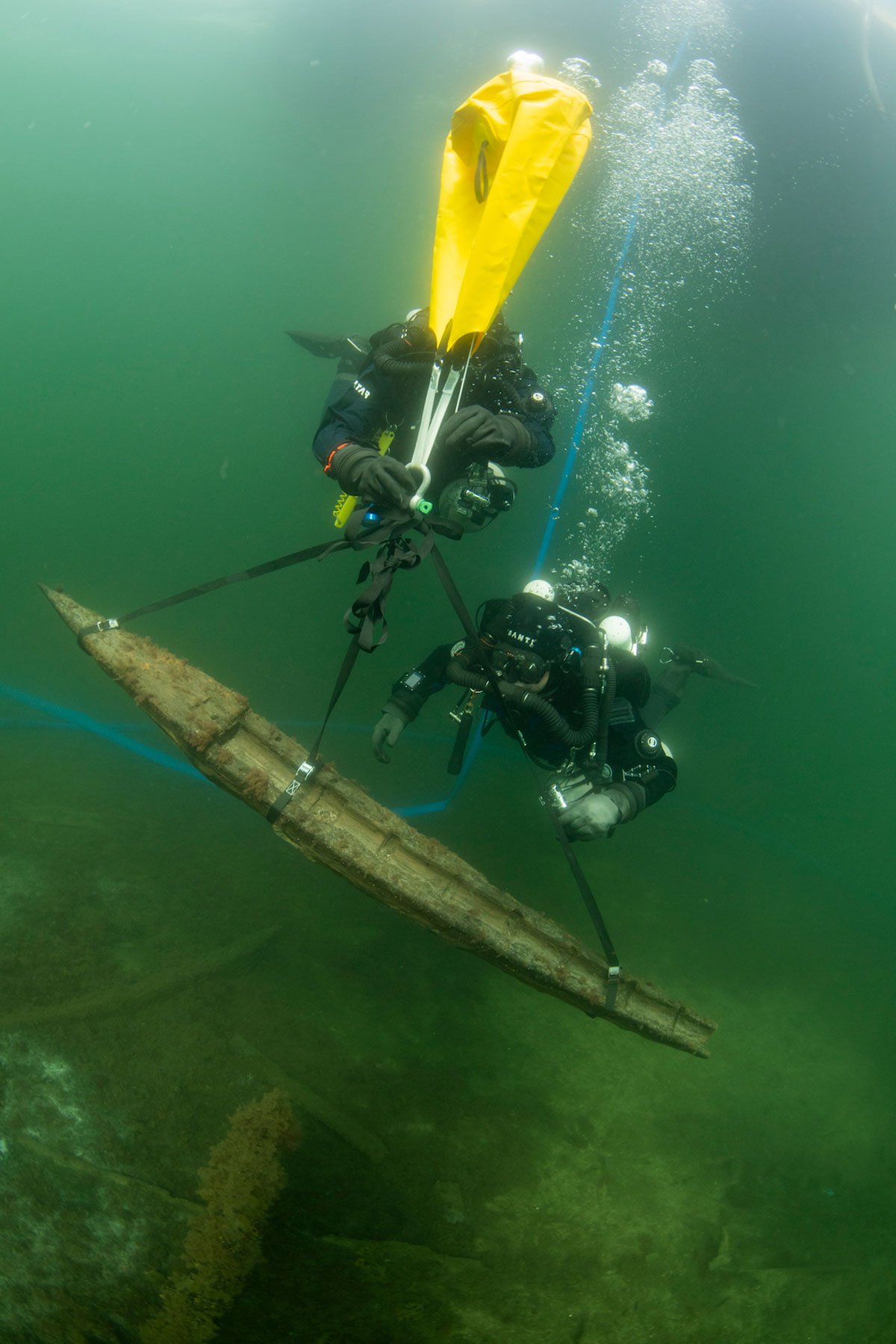The shipwreck of Gribshunden revealed unique artillery and insights into European exploration. Denmark, however, prioritized Baltic control over Atlantic expansion.
Archaeologists from Lund University have uncovered new information about late medieval artillery preserved in the wreck of the royal Danish-Norwegian flagship Gribshunden.
This vessel is the only surviving example of its kind from the medieval era, with both the ship and its weaponry closely resembling those later used by early Spanish and Portuguese explorers. The research highlights how maritime powers of the late 15th century were equipped to begin asserting control and establishing colonies across the globe.
“Exploring a royal shipwreck from the late medieval period is thrilling on its own. Yet the greatest reward comes when we can assemble the evidence afterward, drawing on Martin’s expertise in castles and Kay’s deep knowledge of artillery,” explains Brendan Foley, the marine archaeologist leading the project. He collaborated with fellow Lund University archaeologist Martin Hansson and medieval artillery specialist Kay Douglas Smith.
Gribshunden, the flagship of King Hans of Denmark and Norway, sank under mysterious circumstances in 1495 near Ronneby, Sweden. Its remains are of global importance, representing the best-preserved ship from the Age of Exploration and serving as a close parallel to the vessels of Columbus and Vasco da Gama.
Ocean-going ships such as Gribshunden, along with the artillery they carried, became essential technologies for European seafaring after 1492. These innovations enabled voyages to the Americas and into the Indian Ocean around the Cape of Good Hope, paving the way for widespread European colonization. Gribshunden is particularly valuable to archaeology because it is the most intact example yet found of a late medieval carvel-built warship.
The ship was armed with 50 or more small-caliber guns that fired lead projectiles with iron cores. These weapons were designed for close-range combat, targeting the crews of enemy vessels to disable them before boarding for capture.
Under the direction of Professor Nicolo Dell’Unto, the Lund University team digitally reconstructed these guns using 3D models created from the recovered artifacts.
A Danish ‘floating castle’
Gribshunden was built near Rotterdam between 1483-84. King Hans of Denmark and Norway had taken possession of the ship by spring 1486. The high cost of building and equipping these ships meant Gribshunden probably absorbed about 8% of the Danish national budget in 1485.
Hans utilized his flagship differently from other monarchs; he personally sailed on it frequently, using it not for exploration, but to solidify his grasp on his kingdom. It was his floating castle, enabling royal travel to Sweden and all around the Danish realm, including Gotland and especially Norway.
The king used this vessel in ways similar to a terrestrial royal fortification. This included several soft power functions: economic, diplomatic, social, cultural, and administrative. Underpinning all of these was the obvious hard power of the ship’s martial purpose embodied by the guns and other weapons carried aboard.
Evidence of explosion
Gribshunden served the crown for a decade before sinking while the king was en route from Copenhagen to a political summit in Sweden, where he expected to unify the entire Nordic region in a new Kalmar Union.
Historical documents, including eyewitness accounts, relate that while Hans was ashore in Ronneby, an explosion and fire claimed the ship while it was anchored off the town.
Among the 22-lead artillery shots from Gribshunden, several are flattened on one or two sides. This may be a result of the explosion that sank the vessel. Shot stored in the hold near the gunpowder ricocheted inside the ship.
No Nordic expansion into North America
So, given the existence of these warships, why didn’t Denmark compete in expanding to the Americas? Denmark and Norway shared the long Viking and medieval Nordic history of exploration and settlement in the west, with colonies in Iceland and Greenland, and settlements in North America.
Coupled with the adoption of this new enabling technology, Hans might have successfully competed with the Iberian rulers in global exploration and expansion to the Americas.
However, Hans’ primary concern was consolidating rule over the Baltic region. In pursuit of that goal, Hans himself sailed on Gribshunden into the Atlantic on several royal visits, and to Kalmar on the ship’s final voyage.
One reason for Denmark’s inattention to the Americas might have been a 1493 papal bull signed by Pope Alexander VI. This granted Spain rights to the Americas, and a treaty between Spain and Portugal ceded the Indian Ocean to the latter. Prior to the Reformation, the threat of excommunication for ignoring the papal ‘Inter Caetera’ was very real.
Reference: “Late Medieval Shipboard Artillery on a Northern European Carvel: Gribshunden (1495)” by Brendan Foley, Kay Douglas Smith and Martin Hansson, 31 July 2025, International Journal of Nautical Archaeology.
DOI: 10.1080/10572414.2025.2532166
The research was funded by grants from the Swedish Research Council (Vetenskapsrådet), Crafoordska Stifltelsen, Huckleberry Foundation (USA), and with support from Blekinge Museum and the Lund University Department of Archaeology and Ancient History.
Never miss a breakthrough: Join the SciTechDaily newsletter.
Source link
